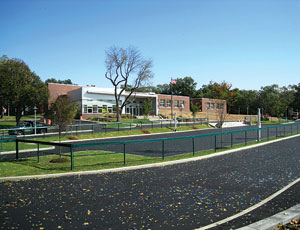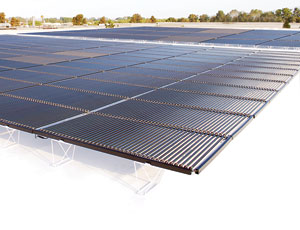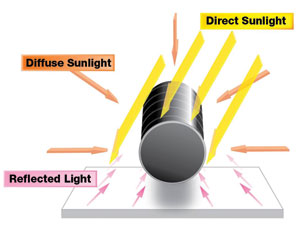Glenville elementary school in Greenwich, Conn., had been living for almost 30 years with a noisy open-plan design and a lack of natural light and fresh air, problems that put it high on the school board’s list for renovation.




Planners also hoped to demonstrate energy conservation and efficiency by tapping the Connecticut Clean Energy Fund to help finance a roof-mounted solar system for the school. That program proved so popular that it ran out of funds, so Glenville’s solar plan was put on hold, says Tyler Tregellas, project executive in
the Milford, Conn., office of Turner Construction, construction manager for the job. But energy retrofit block grants from the Dept. of Energy under the American Recovery and Reinvestment Act allowed the town to bring the idea back to life. The school received $650,000 in ARA funding for the $909,000 solar system.
The system will have an energy capacity of 97.5 kw and should save the school about $18,000 on electricity in the first year—potentially more as rates increase in the future.
| Solar Retrofit | Capacity: 97.5 kw Savings: Estimated $18,000/year |
|---|---|
| ARRA Contract Amount | $650,000 |
| School Renovation Value | $24.3 million |
In the $24.3-million retrofit, the construction team was able to reuse 75% of existing steel and foundations. All the exterior walls were replaced, courtyards added and HVA C systems and partitions replaced. “We were able to save the gymnasium, adding new lights and HVA C,” says Tregellas.
Roofing contractor Silktown Roofing brought in Stamford, Conn.-based American Solar & Alternative Power as the solar-system integrator. The system will use thin film solar cells in cylindrical arrays by Fremont, Calif.-based Solyndra Inc. The new technology takes advantage of a white reflective PVC roof membrane, which is already installed, because the cylinders can capture light energy from any direction—direct or reflected—and convert it to electricity.
American Solar CEO Elliot Isban ticks off advantages: The system does not require penetrations into the roof, panels can be installed in a horizontal plane, they can withstand winds up to 130 mph, and the system only weighs 3 psf. Service will be interconnected with the utility, and if more electricity is produced than is used, the system “will send energy back into the grid using net metering,” says Isban. It also will have a Web-based data acquisition system so students can learn about solar energy.
“It’s an extremely elegant solution,” he says. “We build an onsite generating system with a 20-year life that has no moving parts. Instead of the roof becoming a depreciating asset, it becomes an appreciating asset because the value of the energy is bound to increase.”


Post a comment to this article
Report Abusive Comment